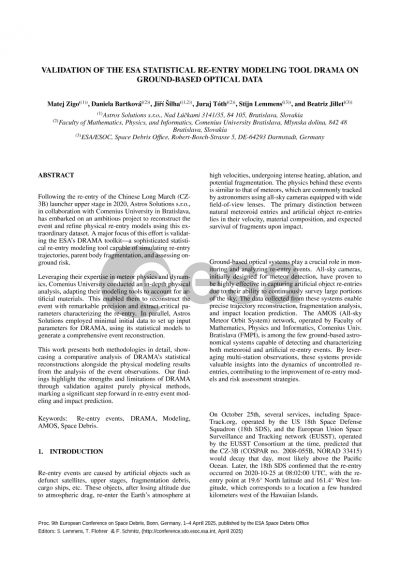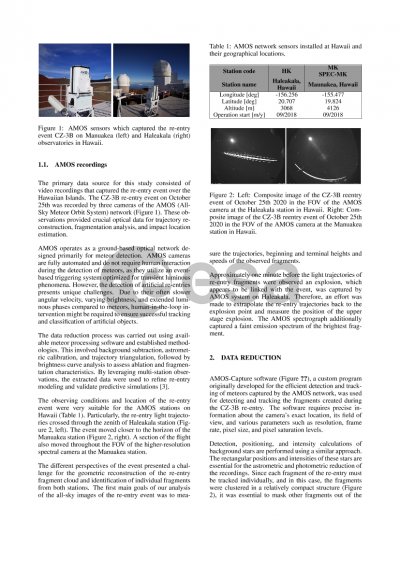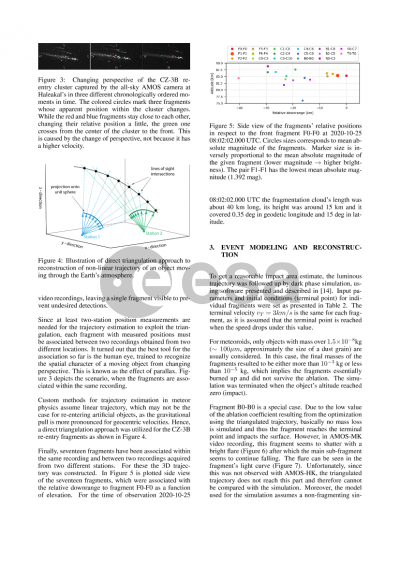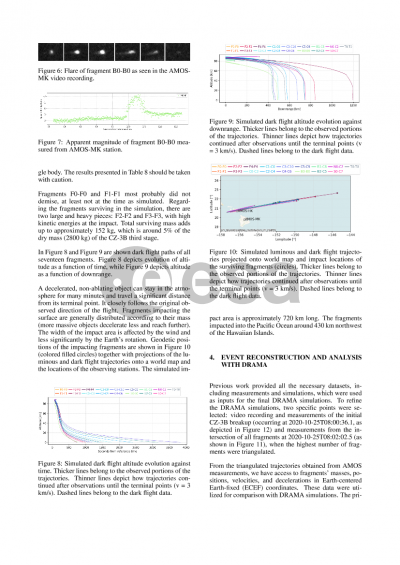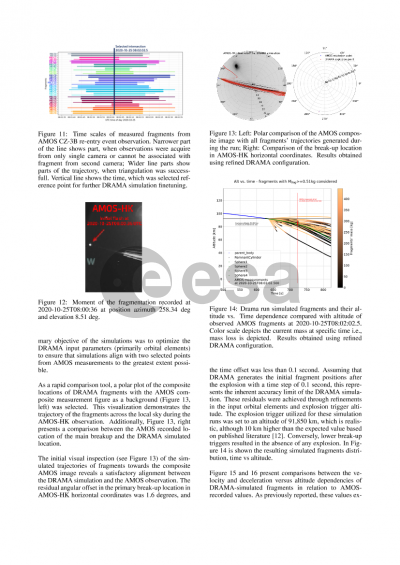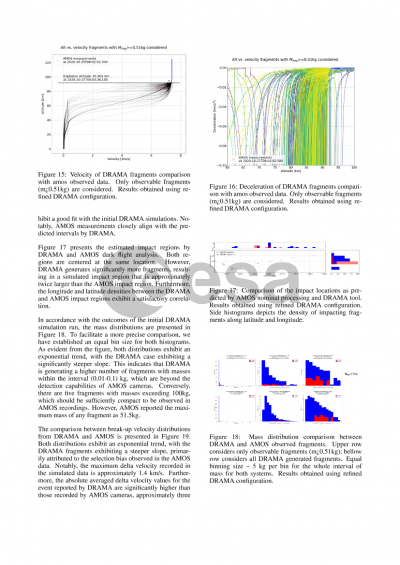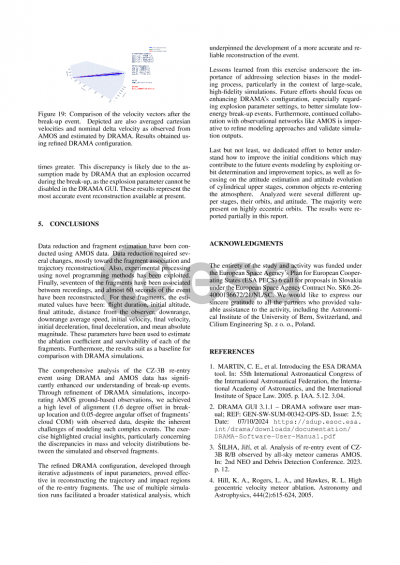Document details

Abstract
Following the re-entry of the Chinese Long March CZ-3B launcher upper stage in 2020, Astros Solutions s.r.o., in collaboration with Comenius University in Bratislava, has embarked on an ambitious project to reconstruct the event and refine physical re-entry models using this extraordinary dataset. A major focus of this effort is validating the ESA’s DRAMA toolkit—a sophisticated statistical re-entry modeling tool capable of simulating re-entry trajectories, parent body fragmentation, and assessing on-ground risk.
Leveraging their expertise in meteor physics and dynamics, Comenius University conducted an in-depth physical analysis, adapting their modeling tools to account for artificial materials. This enabled them to reconstruct the event with remarkable precision and extract critical parameters characterizing the re-entry. In parallel, Astros Solutions employed minimal initial data to set up input parameters for DRAMA, using its statistical models to generate a comprehensive event reconstruction.
This work presents both methodologies in detail, showcasing a comparative analysis of DRAMA’s statistical reconstructions alongside the physical modeling results from the analysis of the event observations. Our findings highlight the strengths and limitations of DRAMA through validation against purely physical methods, marking a significant step forward in re-entry event modeling and impact prediction.
Preview
